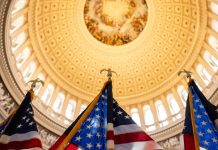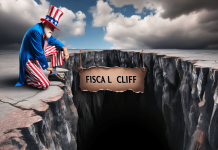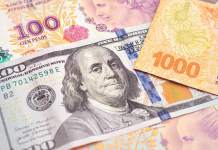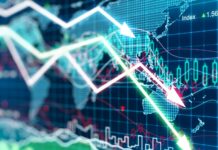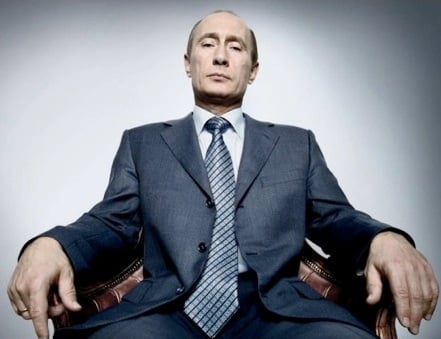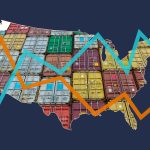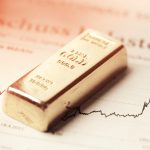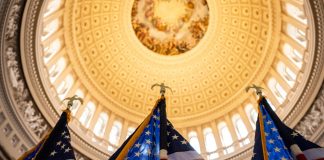July 25, 2022 (King World News) – Dr. Stephen Leeb:
The Russian Economy
A more hawkish Federal Reserve and rising U.S. interest rates have been front page financial news. The European Union recently jumped on the bandwagon with tougher monetary policy as it tries to choke off multi-decade highs in inflation. Meanwhile, last week Russia announced a large decline in its key lending rate to 8% from 9.5% as inflation in Russia dropped to pre-Ukraine war levels. Lest we forget, the ruble remains the world’s strongest fiat currency at the moment.
Some economic statistics from Russia remain opaque, though, probably because detailing how the Russian economy is outperforming the still-dire forecasts would expose the futility of sanctions in preventing Russia from getting what it needs. In this regard, I would give a medal for journalistic valor to Wall Street Journal reporter Evan Gershkovich, who in a July 1st front page WSJ article wrote:
“Bars are filled to the brim in Russia’s biggest cities. Film and jazz festivals are sold out. And while the police patrolling Moscow’s streets are now armed with assault rifles, they are busier handing out fines for public drinking than putting down dissent.”
Since then, most indications including the recent interest rate cut point to Russia’s continued economic resilience.
China Troubles
China is another outlier in terms of monetary and fiscal policy. It has announced massive economic infrastructure spending and an effective end to its policy of reining in speculation in the real estate market. At least judging by its bond market – where in contrast to Western countries, long-dated rates remain comfortably above shorter-term rates – the long-term prospects are for solid growth, despite the recent slowdown. I will have more to say about China at a later date.
For the moment, I’ll just note that the leading countries of the South Eastern (SE) part of the world by and large don’t seem to be facing global economic turmoil. Unfortunately, the same cannot be said about the North West (NW), including the U.S. and Europe.
The U.S. Has Lost Its Way
I’ve written a lot about how the U.S. economy has lost its way after leaving the gold standard. The United States, a once-great vertically integrated country which led the world in just about everything, is now flailing.
In my last King World News interview, I noted that the war in Ukraine is the latest in a string of failed military efforts. But more than that, in showcasing our inability today to wield sanctions as an effective weapon, it will likely mark a turning point in world history. We might be able to surmount the current contrast between economic conditions in the NW and SE if we had a coherent economic policy for turning things around. But that’s nowhere to be seen…
No doubt, Fed Chairman Powell will get the blame. That would be unfair, as he’s simply the messenger for an unprecedented fifty year U.S. decline that will lead to the fall of ‘King Dollar’ and the rise of a new multipolar monetary system that hopefully the U.S. will be cooperative enough to join.
In his Humphrey-Hawkins testimony last month, Powell was asked by a member of the Senate banking committee if the higher interest rates would lead to lower oil and food prices. His answer was no.
As a sidebar, Powell could have explained that higher rates wouldn’t solve the shortage of skilled labor in the United States either. After all, skilled labor requires a working knowledge of at least high school level mathematics – a skill that was once taken as a given for the average American citizen. The United States ranked 31 out of 79 countries for math literacy in a 2020 survey featured on USA Today.
Those Days Are Gone
With respect to the Fed’s control over oil and food prices, Powell, while not lying, wasn’t telling the whole story. If the Fed raised rates high enough to totally crater the economy, it might slash demand enough to bring prices down. Indeed, in prior times, a hawkish Fed could reverse uptrends in virtually anything. But those days are gone. And it’s not only because the SW has become the dominant supplier of natural resources.
The United States has spent so much money and piled up overwhelming amounts of debt in non-productive spending- that efforts to control the effects of printing presses running 24/7 have reached the point where any attempt to pull back on money printing simply backfires.
The year began with 10-year yields at 1.5% and inflation high and rising. Meanwhile, the Fed was indicating that steady increases in Fed funds were in the pipeline. The Fed also indicated that it would soon stop buying Treasury and mortgage securities, which add money directly into the banking system.
A tighter Fed became an aggressively hawkish Fed by the end of April. That’s when Powell told Congress the Fed was considering a series of half-point hikes in interest rates. Additionally, instead of buying bonds, the Fed would begin selling its massive hoard, thus removing money from the economy. Half-point hikes became a series of 75-basis-point hikes, while the Fed continued to assert it was selling bonds.
Despite all of this, bond yields appeared to have peaked in mid-June at 3.5%. Keep in mind that 10-year yields were once considered a proxy for nominal growth (inflation plus real growth). While we can’t say exactly what real growth is, inflation at the last reading was over 9%. Yet yields after reaching 3.5% appear to have topped and today stand at about 2.75%.
At face value, it makes no sense. It seems to suggest that regardless of how high inflation goes, longer-term rates have a cap. Indeed 3.5% is about the same level that 10-year yields reached in 2018, when the Fed was in the process of gradually raising rates. Then the Fed’s gradual approach was more or less consistent with an inflation rate that topped out at 3%, one-third of today’s rate…
A Modern Day Volcker Is Not Coming To The Rescue
The aforementioned strongly suggests the Fed has very limited control over long-term interest rates. Before 2008, that would have made some sense. At that time, the Fed could only set the level of very short-term Fed funds rates. It had no tool for directly affecting longer-term rates. But today it has such a tool – quantitative easing and tightening, i.e., the direct purchase or selling of longer-term bonds.
So the vexing question is how to rationalize a very hawkish Fed, which is sharply raising short-term rates. Concurrently, the Fed has pivoted from being a major buyer of longer-term bonds to a seller– combined with a bond yield top of 3.5%.
Recall that when Volcker slayed inflation, he let short-term rates rise as high as 20%, while long-term rates soared well into the double-digits. And even preceding the Great Recession, longer-term rates reached 5% in the context of inflation that on a yearly basis was always less than 4.5%.
I’m far from being an expert in monetary policy. Likewise, it doesn’t take a rocket scientist to figure out that interest rates need not rise beyond a certain level, regardless of inflation. Hopefully, it won’t require Einstein level genius to figure it out or we’re all in big trouble. To get to the point, an anomaly (like a peak in interest rates) can suggest what is inherently off-kilter. In this case, spotlighting why the current monetary system doesn’t cut it.
The U.S. Has Massive Debt
The U.S. has massive debt across the board. Government debt far exceeds GDP, while household debt is more than three times GDP, by a significant margin the highest of any major economy. Not only has consumer debt been rising for about 50 years, it has done so with consumers increasingly unable to service that debt. One reason is lack of productivity, which has led to lower wage growth. Another is that consumers end up funding a lot of the unnecessary bureaucracy that accompanies virtually every major industry. The unneeded bureaucracy will always get its cut. Ironically, this could mean that higher inflation, rather than increasing the level of peak interest rates, actually makes those rates lower than if inflation were lower.
The bottom line is that high debt ratios in the context of today’s economy, where consumer consumption accounts for about 70%, will be especially sensitive to rising interest rates. The more debt you have, the more you’re affected by rising rates. Inflation makes the situation worse, because even as you’re paying more in interest, you’re also paying more for goods. It means you need to keep borrowing more simply to maintain some semblance of your standard of living…
In the economy of yore, wages and productivity were intrinsically connected. This helped keep inflation in check and led to wage increases that were on par with inflationary conditions.
“Spending more didn’t mean borrowing a lot more.“
But today, borrowing feeds on borrowing. Consumers account for the lion’s share of the economy. However at a certain level of debt (here is where an Einstein of monetary policy would come in handy) relatively low interest rate levels will slow things down. Currently, that level appears to be about 3.5%.
Indeed, recent economic statistics such as the PMI surveys suggest the economy is showing signs of fatigue and may even be contracting. High debt levels mean a slowing economy will always be prone to a vicious circle in which lower spending leads to less employment and further economic decline.
A Trapped Fed And The Vicious Inflation Cycle
If the economy starts slowing while inflation is high, the Fed will have to resume quantitative easing despite that high inflation, portending a vicious circle in which inflation keeps rising. If we could control inflation by increasing oil and food production, we’d avoid a lot of this mess. But we can’t, as shown by how our sanctions have backfired in our attempt to control resource-rich Russia.
To get out of this mess will mean capping the amount of spending power economies have, and that means instituting some form of new monetary system based on gold. A new monetary system will have to allow for the rationalization of all the debt that has been created. I certainly don’t have the exact recipe, but I expect we’ll end up with a basket of digital currencies backed by gold. Weightings of currencies will likely rise and fall depending on any number of factors including a country’s debt.
When it comes to investing in gold, you have to keep reminding yourself to think long term.
The pieces appear to be in place for the transition to start, but that doesn’t mean there won’t be tremendous volatility along the way – because there will be. Don’t get shaken out, because I’m certain you will bitterly regret it in the long run.
Want to LEARN MORE about investing in gold bullion, mining companies, stocks and ETFs? My latest book “China’s Rise and the New Age of Gold” is a comprehensive guide for all investors to maneuver the radical changes coming to the global economy.
FREE PREVIEW AVAILABLE ON AMAZON KINDLE & AUDIBLE!
